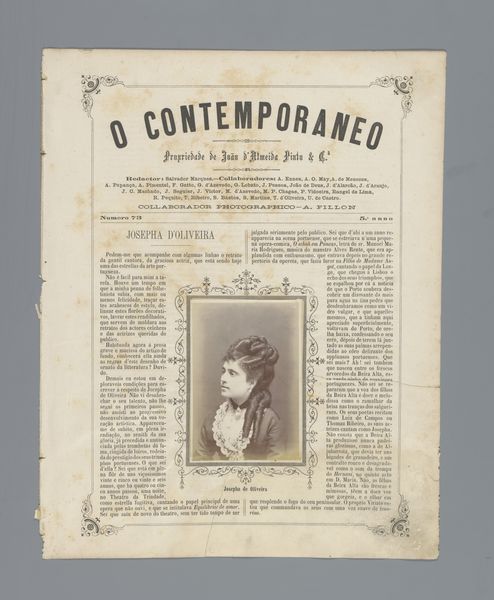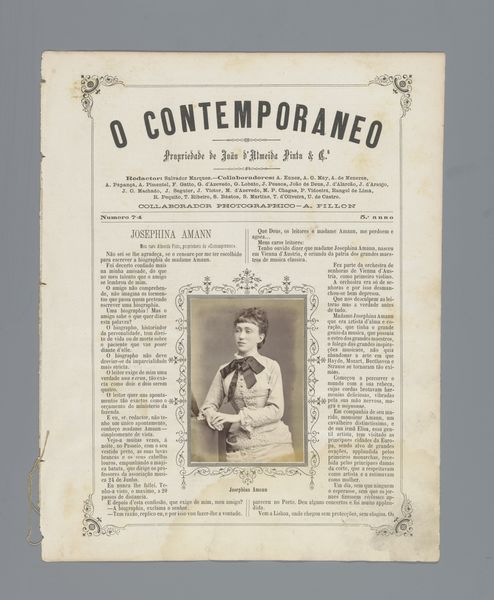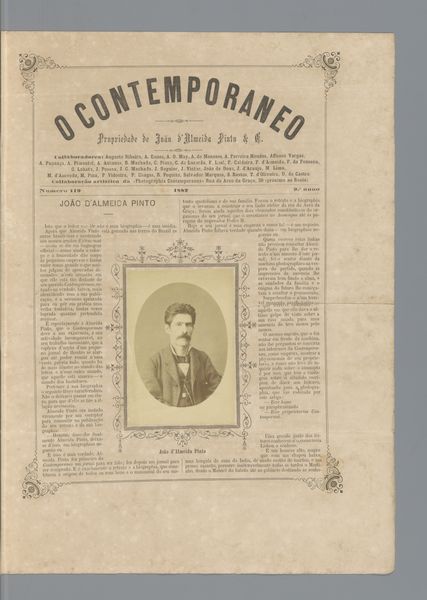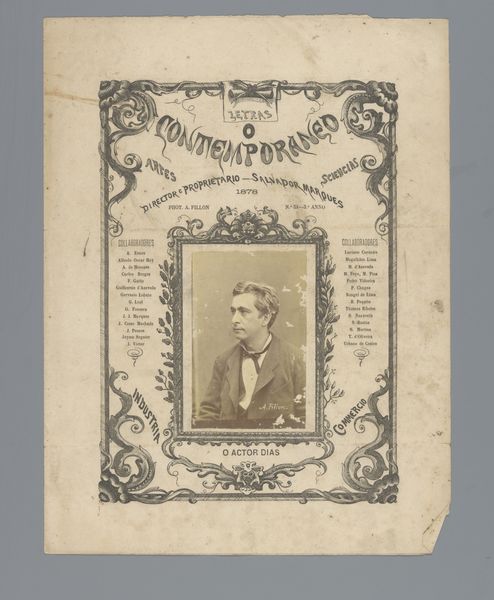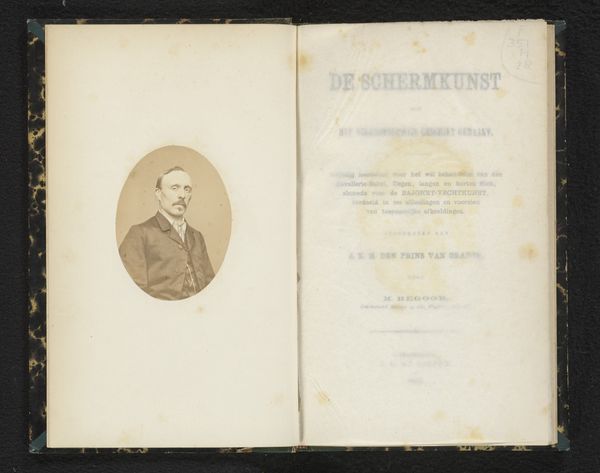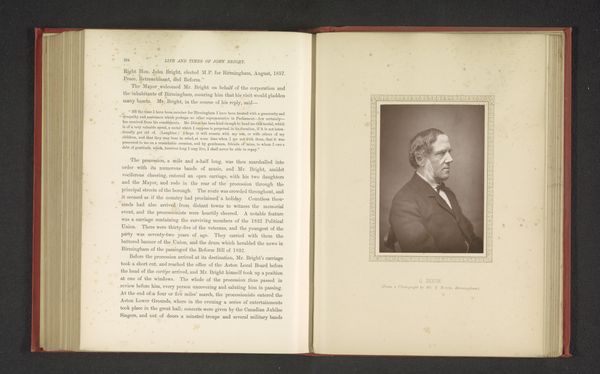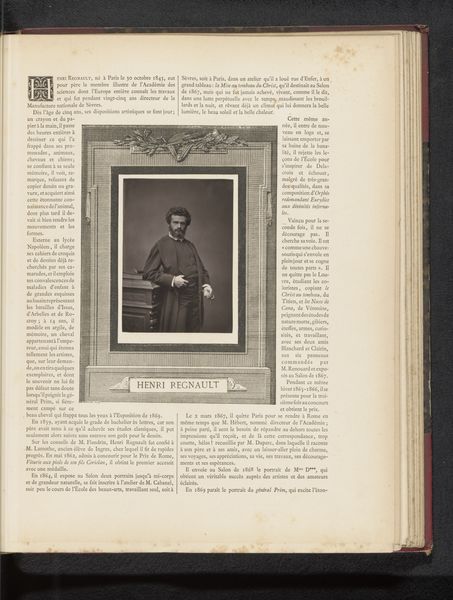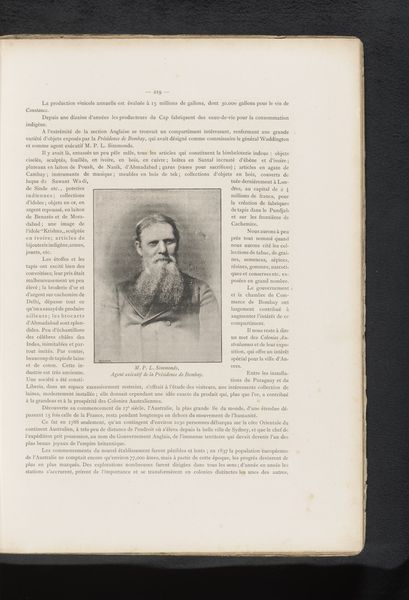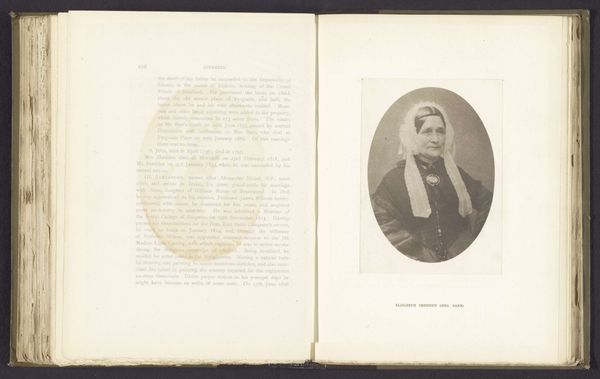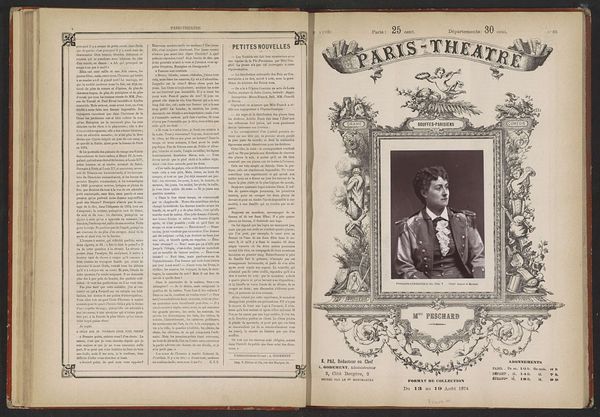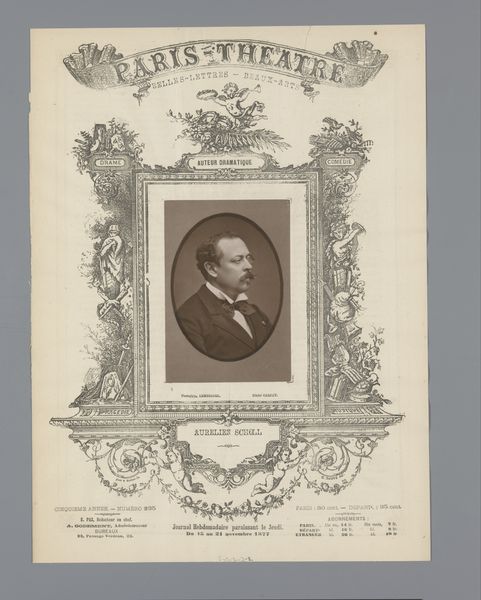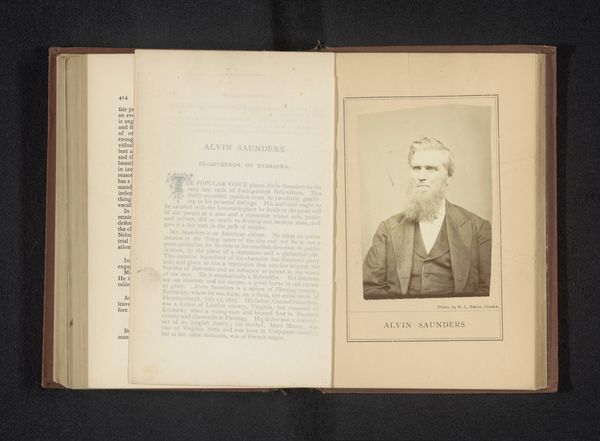
graphic-art, print, photography
#
portrait
#
graphic-art
# print
#
photography
Dimensions: height 320 mm, width 240 mm, height 95 mm, width 64 mm
Copyright: Rijks Museum: Open Domain
Curator: Before us, we have a graphic work titled “O Contemporaneo,” created sometime before 1879. It seems to be a print that incorporates photography, a collaborative piece bearing the name A. Fillon. What strikes you first? Editor: A sense of thoughtful seriousness, a man framed, quite literally, by the ornate decorations of what looks like a newspaper or broadside. There’s a stillness, almost melancholic, about his gaze. The bordering imagery seems to elevate this person, imbue them with great importance. Curator: Indeed. It seems it’s a page of "O Contemporaneo", featuring a portrait of João Baptista Montedonio. In its context, this likely served to broadcast and celebrate Montedonio within intellectual and artistic circles. It reflects how periodicals played a central role in constructing reputations and disseminating cultural ideals. Editor: Fascinating how they blended media even then. The photograph at the center anchors it in a way that engraving alone wouldn’t. Think about what symbols were chosen to surround him! Notice the carefully rendered garlands, reminiscent of laurel wreaths, hinting at achievement and immortality. What exactly did Montedonio accomplish to merit such reverence? Curator: My research indicates he was likely an actor or literary figure; biographical articles in Portuguese periodicals of the time are dedicated to people of that trade. The design and placement here tell us how deeply visual media was involved with constructing identity and conveying social value in the late 19th century. It almost prefigures our celebrity culture. Editor: That framing, that meticulous presentation... It transforms him into an archetype almost. But which archetype? Perhaps it depends on what narratives about success, genius and culture resonated with the readers of “O Contemporaneo". The question this image seems to whisper, is "what did it mean to be ‘contemporary’ at that moment?". Curator: It encourages us to reflect not only on Montedonio's legacy, but on how periodicals like this actively shaped cultural conversations of that era. Editor: I see how printed pages like this one used not just text but carefully constructed images, a strategic blend of photography and evocative symbolism, to broadcast not just individual portraits, but cultural values and national narratives. It really is striking.
Comments
No comments
Be the first to comment and join the conversation on the ultimate creative platform.

